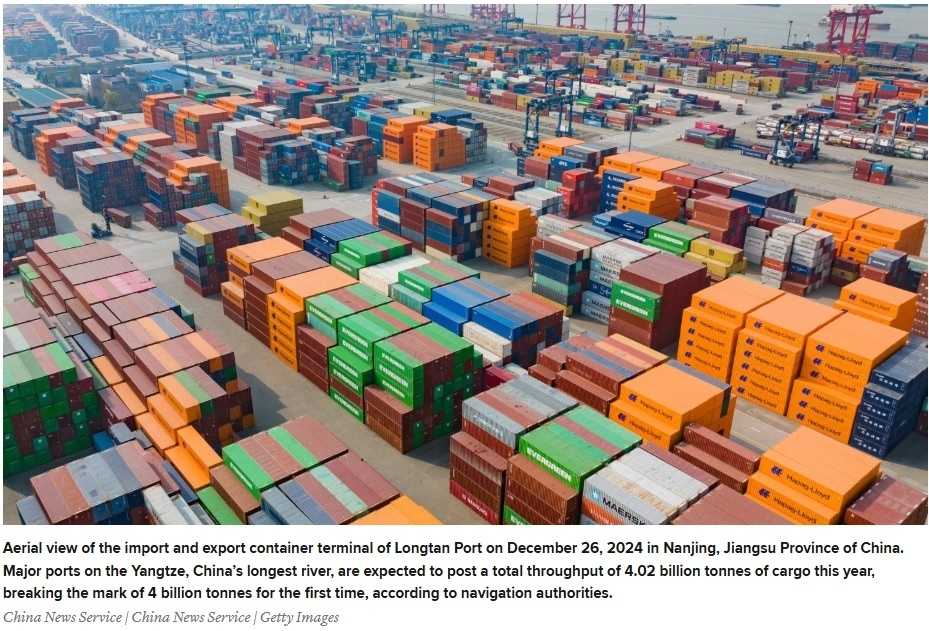Impact of Trump Tariff Threats on Trade Shipments: Strategies U.S. Businesses Are Using to Manage Risks
- Insurance coverage protecting against trade losses is increasingly sought by U.S. businesses
- Companies are diversifying their supply chains to minimize dependency on specific countries
- Enhanced forecasting and fact-based analysis tools help businesses assess tariff impacts
- Companies are negotiating longer-term contracts to secure favorable pricing
- Strategic warehousing is being adopted to stockpile goods ahead of potential tariffs
- Businesses are adjusting pricing strategies in anticipation of increased costs due to tariffs
- Firms are exploring alternative markets to hedge against potential losses in domestic and international sales
Original price was: $1,801,202,518,202,400.00.$80.00Current price is: $80.00.
In an unpredictable geopolitical landscape, U.S. businesses find themselves navigating an evolving trade framework characterized by fluctuating tariffs and relentless policy changes. The recent threats from former President Trump’s administration regarding potential tariff hikes have prompted a notable surge in trade shipments, as companies scramble to mitigate financial risks and ensure operational continuity.
Understanding the Tariff Threats
Former President Trump’s stringent trade policies were aimed at protecting American industries but resulted in a whirlwind of uncertainty about potential increases in import tariffs. These threats have not only influenced the cost of goods but have also reshaped U.S. businesses’ relationships with international partners. As companies assess the landscape, they raise pertinent questions about cost management and supply chain sustainability.
Surge in Trade Shipments
In anticipation of possible tariffs being implemented, many U.S. businesses have accelerated their import activities to lock in favorable pricing and avoid higher costs down the line. This surge in shipping activity is particularly evident in industries reliant on raw materials and components sourced from overseas, such as manufacturing and technology. As companies react proactively, freight volumes are escalated, reflecting heightened trade flows as businesses rush to import necessary goods ahead of potential price increases.
Strategies to Mitigate Risk
To manage the toll of tariff uncertainty, U.S. businesses are employing various strategies to mitigate risks, ranging from diversification of suppliers to leveraging technology for better supply chain management.
1. Diversification of Supply Chain
One of the most effective strategies has been the diversification of the supply chain. Companies are increasingly exploring alternative markets to reduce dependency on countries that may impose tariffs. By engaging with suppliers from multiple nations, businesses are not only securing competitive pricing but also hedging against trade disruptions.
2. Forward Contracts and Hedging Strategies
To protect against potential price increases, many businesses are utilizing financial instruments such as forward contracts and other hedging strategies. By locking in prices, companies can better predict their costs and stabilize their budgeting processes, despite fluctuations in tariff regimes.
3. Inventory Management Optimization
Efficient inventory management has also become a pivotal strategy. Many businesses are reassessing their inventory levels and refining their just-in-time systems to safeguard against sudden tariff changes. Optimal inventory levels can help mitigate the financial impact of disrupted supply chains and higher tariffs.
4. Strengthening Relationships with Customs and Trade Compliance Experts
With tighter scrutiny on trade practices, businesses are investing time and resources into building relationships with customs brokers and trade compliance specialists. Getting expert advice can allow companies to navigate complex regulations efficiently and stay compliant with evolving trade policies.
Conclusion
The uncertain landscape created by Trump’s tariff threats continues to challenge U.S. businesses. However, through effective implementations of diversified sourcing, price-hedging strategies, enhancing inventory practices, and fostering strong trade relationships, companies can fortify their operations against potential disruptions. As the trade environment evolves, remaining adaptive will be key for businesses as they working continuously to smooth the impact of volatility on their operations.





There are no reviews yet.